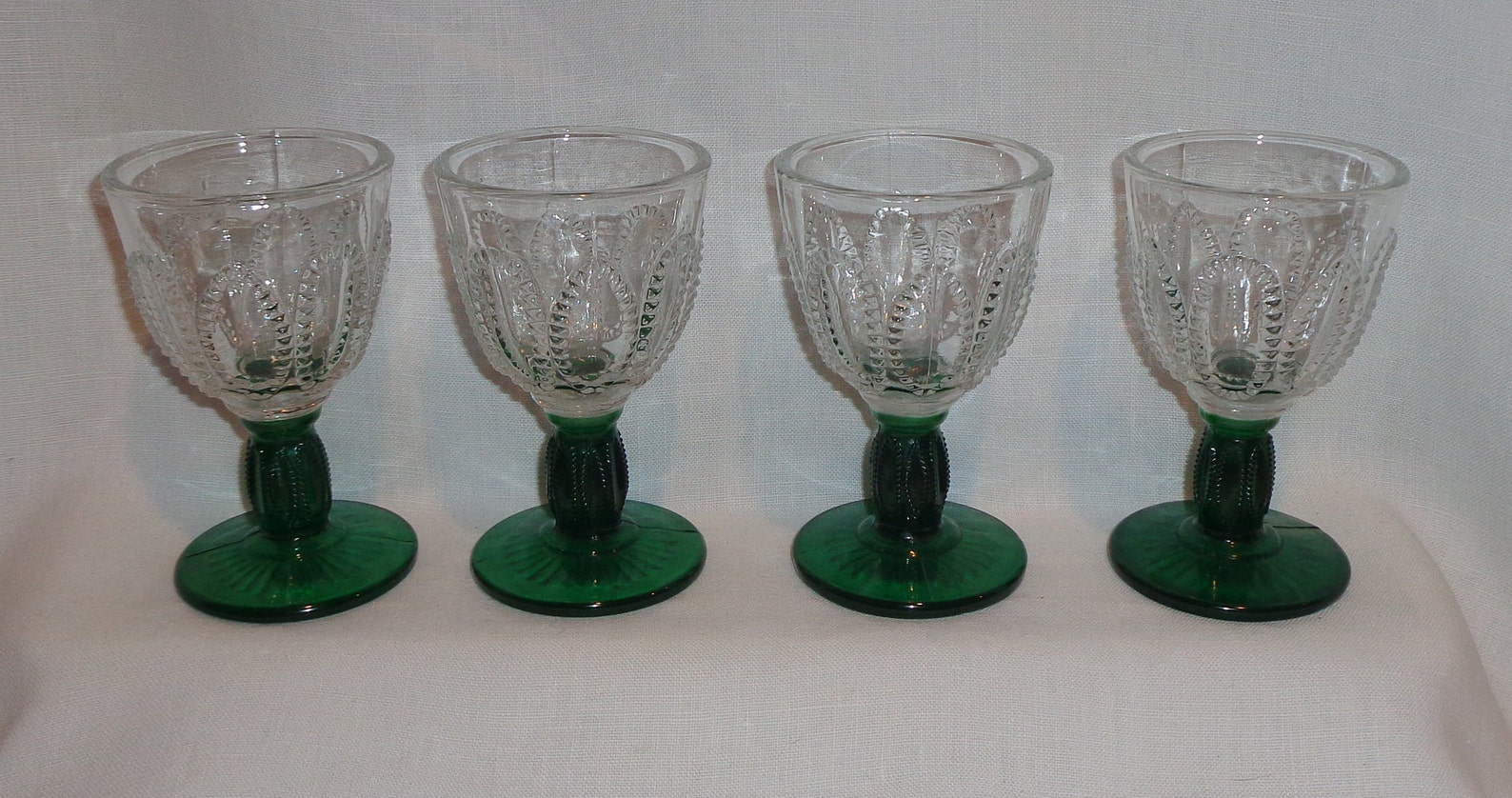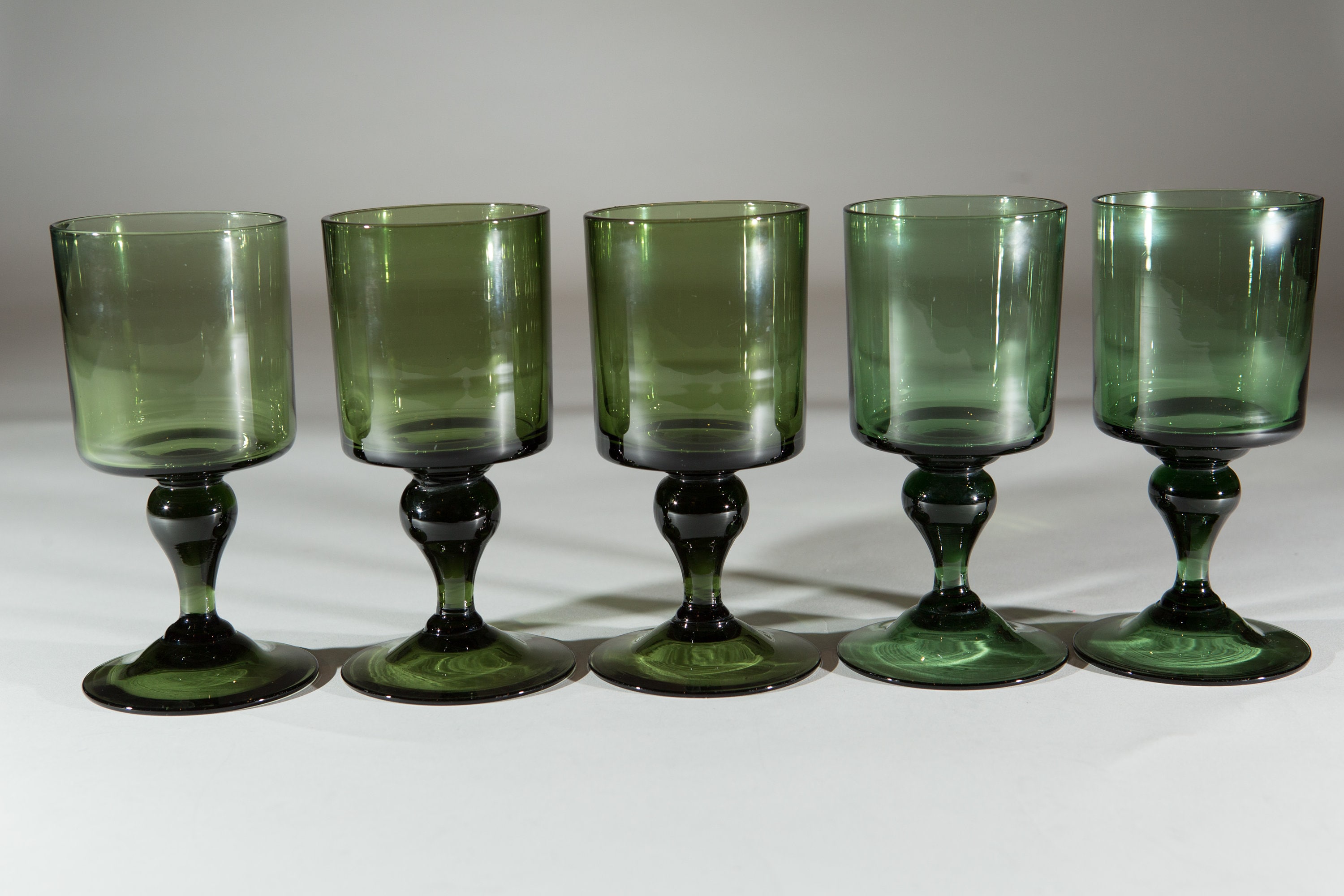

For these reasons German roemer wine glass goblet makers started making them with a green stem and clear bowls. Originally the entire roemer glasses was all solid green, but wine lovers felt that the green interfered with the color and presentation of the wine, as well as prevented the drinker from judging the purity of the wine. The green stem comes from the potash and sand from the forest, called “forest glass”. They are called römer glasses as a tribute to the Romans, who first brought wine to Germany. Authentic German Rhein made römer wine glasses and goblets always have solid colored green stems and most, but not all roemers have decorative gold rims. The shape of an authentic German roemer goblet is a hemisphere, superimposed on a cylinder, with a hollow foot, which is made by coiling threads of molten glass around a conical core. The roemer, is a type of wineglass that evolved in the Rheingeu Rhein River wine country areas of Germany over several centuries, until reaching its present form (which is considered perfection by German wine enthusiasts) in the 17th century. The vintage green stem römer or roemer glass is the original German wine glass. Vintage German roemer glasses and authentic hand painted porcelain wine goblets for sale are decorative, collectible, make great gifts, have a unique history and make drinking wine, especially German wine, more enjoyable and fun. To drink their wine, German glass and stein makers, created a uniquely shaped wine glass called a römer or roemer glass, which is perfect for German wine, as well as decorative hand painted porcelain stoneware goblets.

Whether you are a fan of German wine or not, German wine has an important place in history and played a large role in the expansion of Christianity in Europe. Today, German wine is still produced primarily in the Rhein region of Germany. The vineyards of Germany expanded, until it is believed they reached their greatest extent, sometime around 1500. In the Rhein, German vineyards flourished for several medieval centuries. Charlemagne is supposed to have brought wine east of the Rhine to Rheingau or Rhein. Before the era of Charlemagne, it is in Western Germany and in the Roman outposts that Germanic viticulture was primarily practiced. In those days, the western parts of today's Germany, made up the outpost of the Roman Empire that fought against the Germanic tribes on the Eastern side of Rhine River. German wine dates all the way back to ancient Roman times, around 70 - 270 AD. However, Germany has a rich wine history, which includes unique and decorative hand painted fine stoneware porcelain wine goblets and vintage green stem römer or roemer glasses. Germany, is probably more known for beer and large decorative beer cups than wine and wine glasses.


 0 kommentar(er)
0 kommentar(er)
